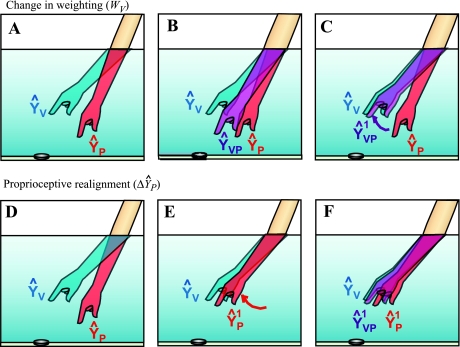Fig. 1.
Sensory weighting and realignment could each be used to compensate for a visuoproprioceptive misalignment. A: when reaching into a fountain to pick up a coin, for example, the visual estimate of hand position (ŶV) will be offset from the proprioceptive estimate (ŶP). B: the brain is thought to weight and combine the available estimates into a single, integrated estimate of hand position (ŶVP) (Ghahramani et al. 1997). However, relying on this integrated estimate will result in missing the coin, which is most closely lined up with ŶV. C: to bring the integrated estimate closer to ŶV, the brain could increase the contribution of ŶV (i.e., up weight vision), yielding ŶVP1. D–F: alternatively, the brain could realign proprioception, bringing ŶP closer to ŶV (E). When the brain integrates ŶP1 and ŶV (F), ŶVP1 is obtained, and the person can accurately reach the coin.

